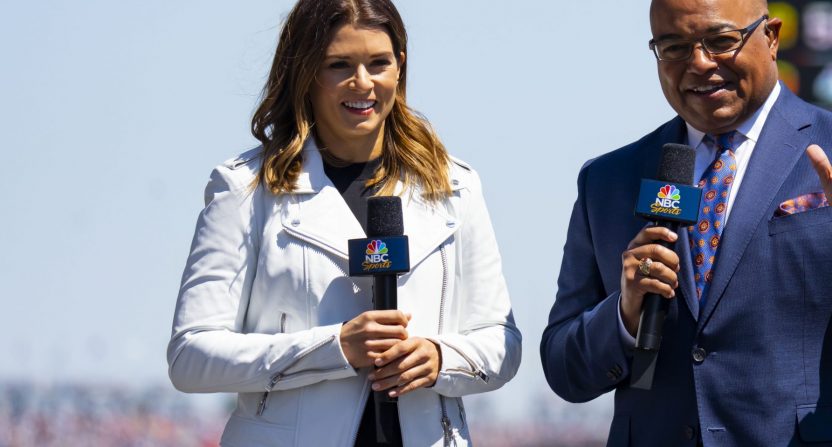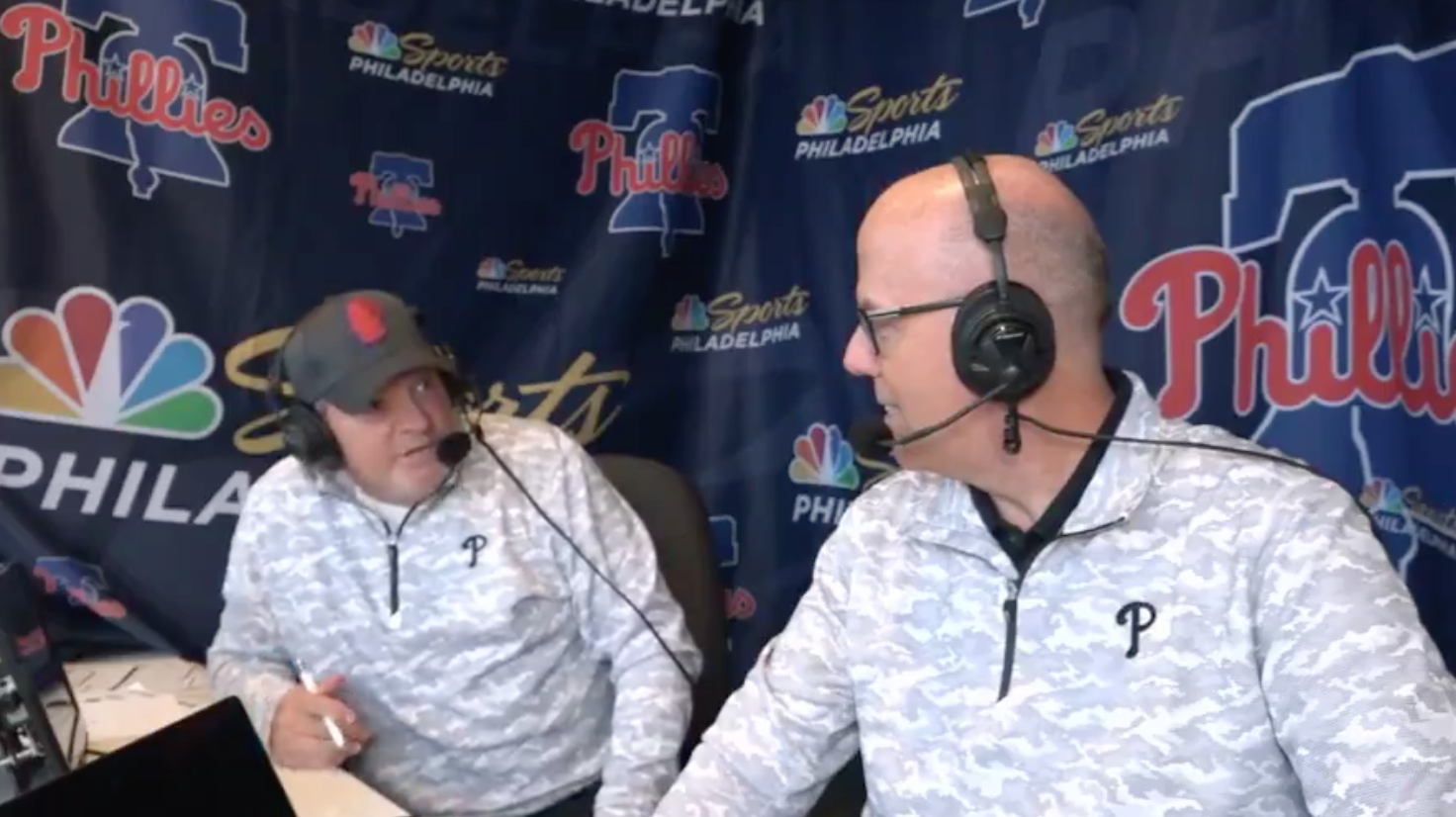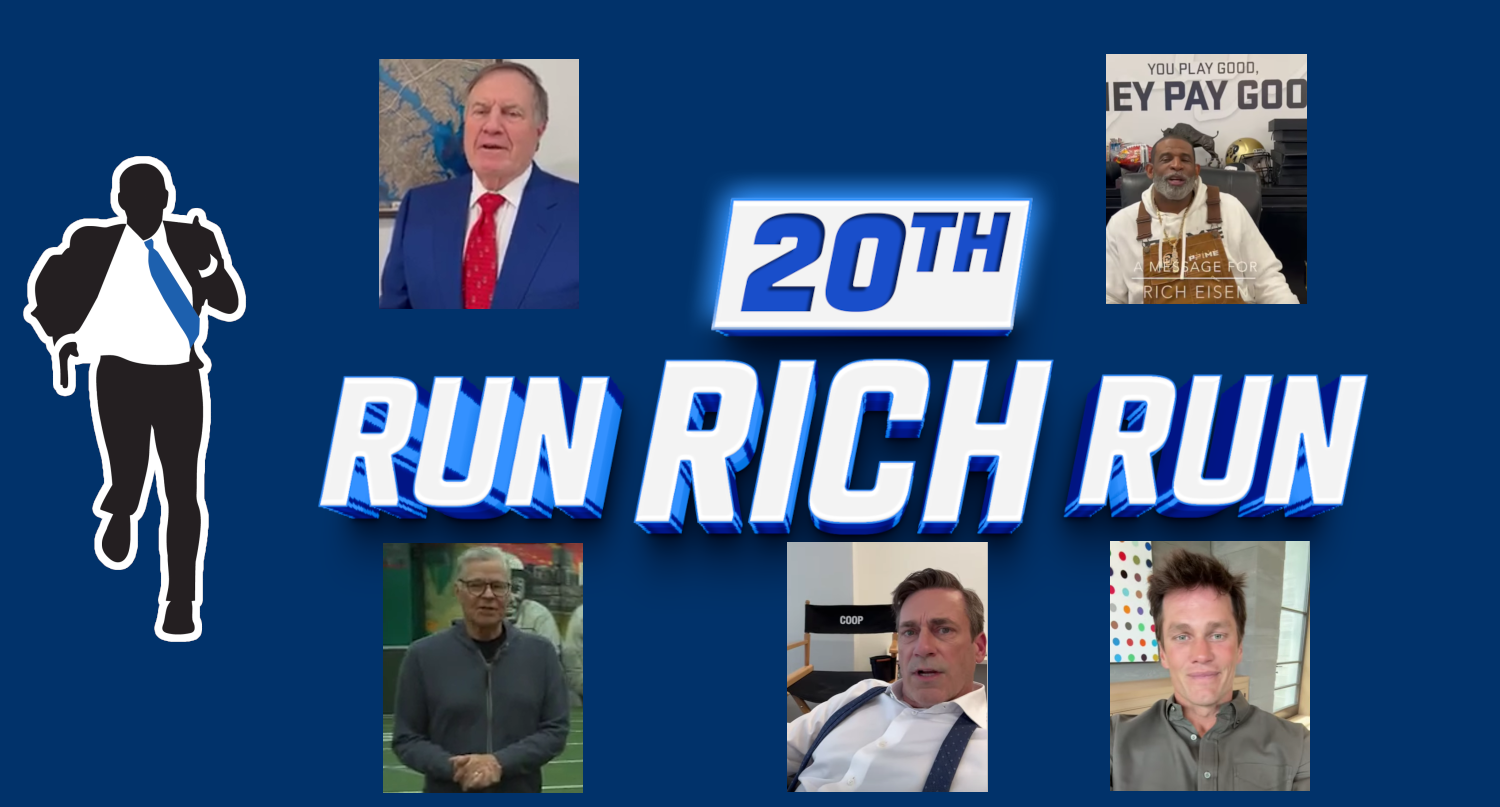Danica Patrick has long been the leading light for women in motorsports, having driven in IndyCar (winning a 2008 race in Japan) and NASCAR, and appearing on broadcasts of motorsports since her retirement in 2017. She is the American face Formula One fans see on ESPN’s broadcasts, which is the Sky Sports feed from the United Kingdom so she is surrounded by Brits. Awful Announcing spoke with Patrick following the recent US Grand Prix in Austin Texas, about what it will take to push F1 further in the U.S. She also commented on when or if a female driver will make it to F1 (she doesn’t think so in the near future and that it could be decades), her businesses outside of motorsports, why she now feels comfortable being feminine on set at the racetrack and her plea to NASCAR to shorten its races. The following interview is edited for clarity and conciseness.
Awful Announcing: How important is it to have an American as part of the Sky Sports coverage?
Patrick: With the more American races, it makes sense to have an American to connect with the fans. And to bring more American fans of course, and to try and grow the American fan base. I heard a statistic that I was surprised by, that on the Netflix series (Drive to Survive), which is very popular and has been very responsible for the growth of the following here in the States. But it is number one in every other country but number three, still in the United States. So that’s just sort of an example of how the American fan(base) is still not as big as it could be. And then also just sort of coming at it from a relatability standpoint,…having the credibility and I raced in everything but F1, but I have a lot of a lot of experience and success in my career. It always helps to have someone in the broadcast crew that has a reputation that the fans trust, and that they feel like they can learn from.
How can F1 grow more in the U.S.?
Patrick: Having someone to be able to bring more fans in on this side of the camera, ultimately having a very recognizable, iconic American driver would be another really big draw. Logan Sargeant’s American, but he didn’t really grow up…making his way to Formula One in the United States. So, he’s just not very well known here. Having somebody with a name and reputation already would probably be something else that would really help.
How do you see the difference between commenting on an IndyCar race versus a Formula One race?
Patrick: It’s really the same thing. And at one point I kind of questioned if my technical knowledge of an IndyCar would translate to a Formula One car. So a little while back at the Singapore race, I worked with (Sky analyst Bernadette) Bernie Collins… who came from the technical side in Formula One as a strategist. And so I was able to ask her a lot of technical questions about the car and various different setup situations and feedback that I was hearing from drivers and then asking if this would correlate with my experience in IndyCar and she said, `It’s all the same.’ So this is probably why I have the role in IndyCar, NASCAR in F1, to varying degrees in each is the role of speaking to the experience of the driver, to the car to what’s going on on the track.
How long do you see yourself in the commentator’s role? I know you’ve talked about wanting to do other businesses. Do you see yourself long term in this role?
Patrick: I do have other businesses, even before I was done racing, I already had a wine brand called Somnium. It’s a Napa Valley wine. And since then, I’ve added another one to the portfolio, a French rose called Danica Rose. I started a candle company, I do speaking engagements, I have a podcast that started about four years ago, I have lots of other businesses and things that I do and and commentating now is just one of those businesses.
And longevity in TV work?
Patrick: As long as I have fun with it, for sure, it’s a really good time. And to be honest, it gets easier as time goes on, because I know more about what’s going on. In the very beginning, I was not as prepared, I didn’t know the ins and outs of the series, I didn’t even know all the drivers… Now a couple of years later, I actually feel like the job gets a little bit easier, because there’s a little less studying to do. So it’s a little easier… one of the things that’s been true in my career, post racing that’s been very noticeable is just that a lot of my fan base is still race fans, and of course, male. And so it does a really good job of keeping my brand awareness out there… I just heard from a friend and she sent me a message and she just said, `I’ve been looking so cute in all my outfits at the track.’ My response to her was just that, it’s fun to play that role at the track a little bit and where before I was showing up in jeans, a team shirt, no makeup and my hair just straight and combed. So it’s fun to be more feminine, and show a little bit more of my style and personality outside the car.
The circuit created the F1 Academy to train female drivers, when do you think F1 will get a female driver?
Patrick: In the near future, probably not. But I’m sure eventually there will be,
How much time is in the near future?
Patrick: The next two years, maybe three to five years. I’m not sure. But maybe sometime after that. Maybe in 20 years.
What are the hurdles?
Patrick: Anyone that’s good enough
WIll F1 Academy succeed, produce F1 drivers?
Patrick: It’ll definitely produce more females involved in Formula One, whether or not it’s going to actually produce a Formula One driver, I don’t know. And part of that is because there’s not a single girl that’s going to go from that to Formula One. They’re not going to go from the Academy to Formula One, they’re going to have to go through so many more steps… but for them to get an opportunity to drive a car and learn the technical aspects and be involved in racing in an open wheel car which is hard to do, could really lend to more women on teams.
How do you as a commentator, media personality react to criticism?
Patrick: Great… it’s part of the drama of television. It’s also me triggering people, which has nothing to do with me. And I think that when I work as hard as possible, and do the best job I possibly can and take the job seriously, whatever job that is, I know I’ve done everything I can. And so criticism is, I probably already know it, if it’s true, right? I probably already know it. So I’m pretty aware. Even while I was driving, I always tried to make sure that I didn’t leave room for the criticism to be able to get to me… I always tried as hard as I could and did everything I could. And if something wasn’t working, I tried new approaches. There’s lots of layers to criticism and where it comes from. But I feel like I’ve done pretty well with it, because it was kind of the name of the game for me.
TV ratings for entities like NASCAR are well down from their peak.How healthy in this country is auto racing as a sport?
Patrick: I sat down actually with one really important person within NASCAR… one of the things I said was, ‘the races are way, way too long.’ People’s consuming habits change… because people can’t keep their attention span long enough. So when you’re asking them to sit in front of a television for five or six hours, with pre race and the race and everything, that’s a lot of time to expect someone to be attentive. Sports all have their ebbs and flows. Formula One is on the rise, but NASCAR is struggling a little bit more. And there was a time when Formula One wasn’t really a blip on the radar here in the States and NASCAR drivers were everything. A lot of that correlates with, yes, the product, but also the marketability of the drivers within it and the personalities. NASCAR has suffered a lot of losses when it comes to their personalities with a lot of the big famous names being gone. There was Jeff Gordon, Dale Earnhardt jr. and Tony Stewart and myself and Carl Edwards… I’m sure that Formula One will have its dip in popularity somewhere down the line and other motorsports will be on the rise.







